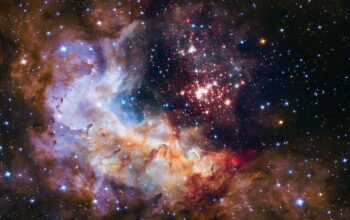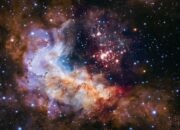The inexorable progression of scientific inquiry often leads us to a precipice—an edge where burgeoning understanding melds with the unknowable. The current milieu of discovery, especially in the realms of physics and cosmology, provides fertile ground for contemplating the end states now in view. This phrase encapsulates a duality of meaning: both the terminus of theoretical frameworks and the metaphorical ‘end states’ of our understanding itself. It is within these territories that curiosity is piqued, and transformative perspectives are elucidated.
To elucidate upon the concept of ‘end states’, one must first delineate what is meant by this term. In the vast expanse of physical phenomena, end states refer to the final configurations or conditions that systems may attain over time as they evolve according to the laws governing them. For instance, consider the trajectory of stellar evolution; stars, vast nuclear furnaces, invariably end their existence as white dwarfs, neutron stars, or black holes depending upon their initial mass. These terminal conditions are dictated by gravitational forces, thermodynamic processes, and quantum mechanical principles, culminating in luminous explosions or silent remnants. This evolutionary journey through diverse stages starkly illustrates the inexorable nature of physical systems transitioning toward their end states.
Yet, the inquiry does not stand still at this mere cataloguing of phenomena. The fascinating interplay between established scientific paradigms and revolutionary concepts propels us toward a reimagining of these end states. For instance, theories positing a multiverse—a framework suggesting the existence of an infinite ensemble of universes—challenge the very foundations of our understanding of reality. This notion not only piques curiosity but compels one to reconsider the fundamental parameters that define our own universe. What does it mean for our existence, our end states, if numerous alternate realities coexist? Understanding the posited myriad of cosmic outcomes mandates an integrative approach to the fundamental laws of physics.
Furthermore, as we delve deeper into the substrates of cosmic evolution, we encounter increasingly profound ramifications for the end states of our universe itself. The contemplation of entropy and the Second Law of Thermodynamics reveals a trajectory toward thermodynamic equilibrium—often demarcated as ‘heat death.’ In this state, all energy disperses uniformly across a vast expanse, creating a homogeneous and isotropic environment devoid of available energy for processes that necessitate gradients. This stark vision of a future cosmos embodies the culmination of thermodynamic processes, rendering it a thought-provoking punctuation mark on the saga of existence.
The notion of ‘end states’ extends into the realms of consciousness and cognition as well. In exploring the cognitive sciences and their interface with physics, one begins to discern a cascade of implications tied to our understanding of ‘self’ and ‘reality.’ As technology evolves, particularly through advancements in artificial intelligence and neurobiology, questions surrounding the nature of consciousness emerge. Are we not approaching the precipice of an end state whereby human consciousness is indistinguishable from computational processes? This paradigm invites us to examine the ethical, philosophical, and scientific dimensions of consciousness—entwining the discussions somewhere between physics, neurology, and existential philosophy.
Paradigmatic shifts occur when scientific revolutions critiqued by figures such as Thomas Kuhn offer profound insights into this dialogue. The shift in perspective oscillates between entrenched perspectives of determinism and emerging probabilistic frameworks. The Copenhagen interpretation of quantum mechanics, a fascinating conjunction of innate randomness and interconnectedness, challenges the determinism so long upheld by classical physics. As physicists grapple with such dichotomies, the implications for understanding the end states of particles themselves come into sharper focus. Probabilistic wave functions hint at a cosmos governed by uncertainty, igniting a kaleidoscope of interpretations, each vying for supremacy in the pantheon of scientific discourse.
This perspective can evoke a quite profound sense of wonderment. As we traverse these conceptual landscapes, we are compelled to inquire: what happens when scientific inquiry bleeds into the philosophical realm, and vice versa? The age-old question of purpose and meaning veils itself with a fresh lens in the face of a universe that simultaneously reveals the monumental scales of chiaroscuro—of creation and dissolution. The dance of particles at subatomic levels unfolds a reality replete with myriad possibilities yet converging upon specific end states governed by probability.
Ultimately, as we stand upon this precipice—the edge of understanding—we gaze into the abyss of both the micro and macrocosmic frameworks of existence. The interplay of knowledge and ignorance offers an invigorating landscape where the boundaries of comprehension are challenged and reshaped by advancing discoveries. The collective endeavor of science operates as a beacon, illuminating the nuanced depths of our universe. Whether through the lens of cosmology with its celestial bodies, or through the intricate web of consciousness, the end states foreshadow a reconceptualization of existence itself.
As the evolution of scientific thought continues to burgeon in complexity, the necessity for a profound shift in perspective remains paramount. Curiosity is the fulcrum upon which new inquiries pivot, steering us toward more encompassing and inclusive frameworks that elucidate the intricate tapestry of reality. It is through this lens that we may appraise the marvels and mysteries, assiduously investigating the interstice of understanding that so tantalizingly lies before us.












